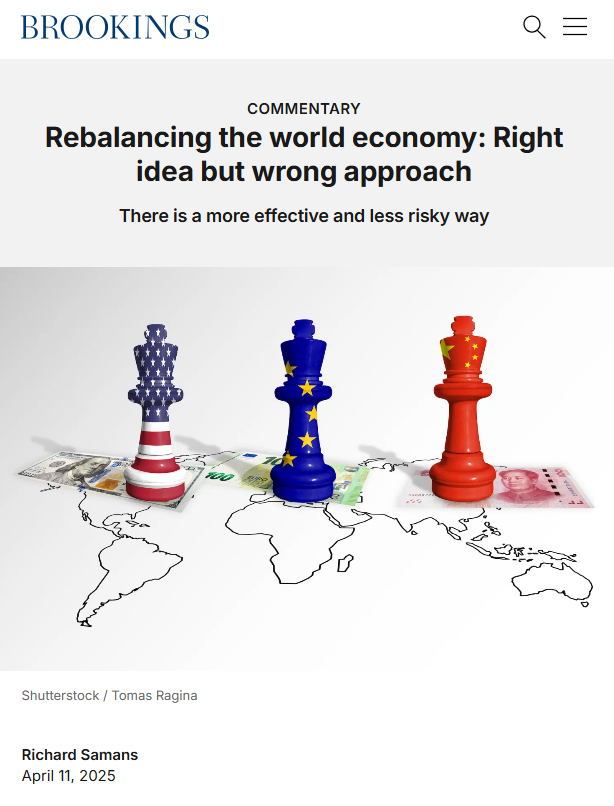A four-part “G3” US-Europe-China accord to address global economic imbalances
Richard Samans, TASC Senior Fellow at Geneva Graduate Institute,
In his latest Brookings article, Richard Samans argues that while global economic rebalancing is necessary, tariff-led strategies are the wrong tool—calling instead for coordinated fiscal, monetary, trade, and social policies.
The European Union, Japan, Switzerland and many other countries have been wise to respond to President Trump’s new “reciprocal” trade initiative in a measured fashion. By staking out hardline positions, the US and Chinese governments are playing a game of chicken with the world economy and, by extension, their own.
The truth is that the world economy is in a state of disequilibrium, and this should concern everyone. The 90-day pause in execution of most of proposed tariff increases provides an opportunity to fashion a more cooperative and thus effective solution to the crisis.
The EU and other major economies should accept the premise motivating the Trump administration’s actions—namely that the world economy and many of its principal norms and institutions require recalibration and reconstitution—and suggest a more effective and less risky way forward. Such a positive sum game off-ramp is available, drawing upon historical precedent, notably the last two successful exercises in macroeconomic cooperation: the Plaza and Louvre Accords of the 1980s and the coordinated stimulus measures agreed in the 2009 G20 London Summit.
However, to be fully effective this time, such a “G3” US-Europe-China accord must be a truly grand bargain, firing on all of the cylinders of international economic cooperation. It will need to include major initiatives in fiscal, monetary, development, and trade policy in order to yield demonstrable net benefits for each of the main protagonists as well as the international community as a whole.


